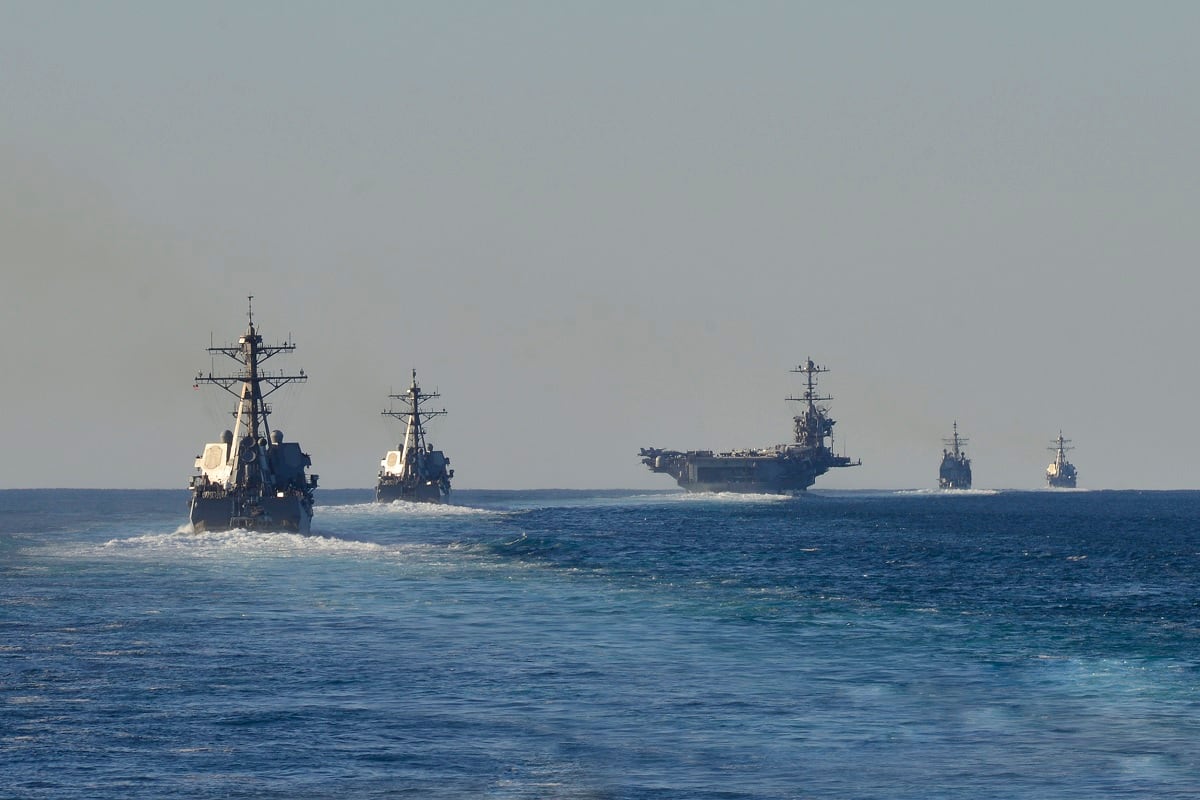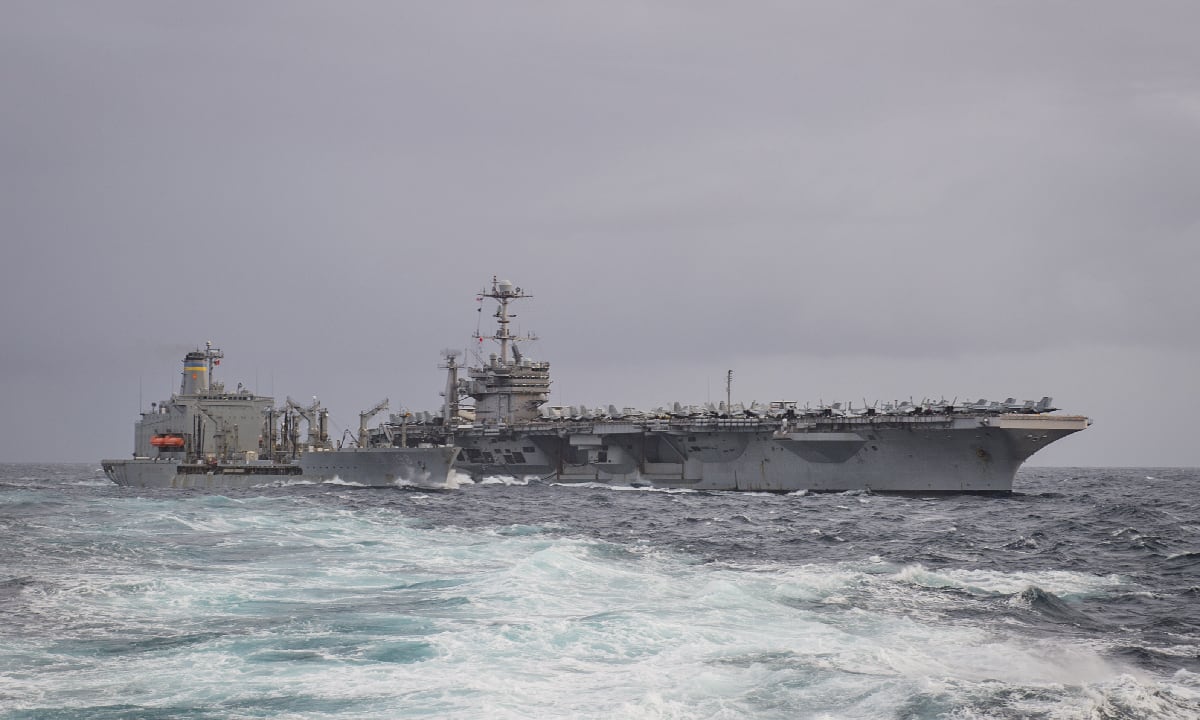WASHINGTON — The push to grow the U.S. Navy by about 20 percent was given a new lease on life, politically speaking, with a renewed push from the White House and acting secretary of the Navy. But the fundamental issue applies: The Navy can’t tack on a significant number of extra ships without more funding.
In recent comments, the president’s national security adviser, Robert O’Brien, and acting Secretary of the Navy Thomas Modly stressed the Trump administration’s continued interest in pursuing a larger fleet. But Navy leadership, fresh off two deadly maritime collisions in 2017, balk at the idea of sacrificing readiness for shipbuilding, according to both public statements and multiple officials who spoke on condition of anonymity.
And indeed “readiness” throughout the armed forces has been the watchword even as former Defense Secretary Jim Mattis’ tenure slips further into history. In his confirmation hearing for the defense secretary position, Mark Esper described balancing readiness with modernization as the Defense Department’s “central challenge.”
“This need to balance current readiness with modernization is the department's central challenge and will require strong leadership, open and continuous dialogue with others, and the courage to make tough decisions,” Esper told the Senate Armed Services Committee.
The Navy, unwilling to sacrifice current readiness as it has in the past, has insisted repeatedly that if the government wants to buy more ships, it must also pay for the manning, training and equipping of those ships.
RELATED

In recent comments, Modly demanded the Navy bring him a 10-year plan to get to 355 ships, noting that the Navy would also need more money. He has also said that without more funding, it’s just not going to happen.
“The path to 355 is a challenging path because, frankly, it’s a mathematical issue,” Modly told conservative radio talk show host Hugh Hewitt in a recent interview. “I mean, if you’re going to grow the force by 25 to 30 percent, and we started at 275 [ships], you need to have a top line that matches that. We had a big bump [in funding] in the first year or two [of the Trump administration], but … we’re sort of flat going forward.
“And so that’s where the decisions base has to be brought and made clear to the president and the secretary of defense about, hey, look, if this is the path we’re going on, we’re going to probably need to have more top line for the Navy.”
Hollow force
The mismatch between the political desire for a larger fleet and the available funding under the Navy’s 2021 top line was the driving force behind a series of cuts outlined in a recent memo from the White House’s Office of Management and Budget, according to three Navy officials who spoke on condition of anonymity to discuss pre-decisional budgetary matters.
When given the choice between funding the current force structure and shipbuilding programs, or maintaining current readiness, Navy leaders chose to cut shipbuilding and force structure, the sources agreed.
And while it’s unclear what the Navy’s top-line budget will be, the cuts that resulted from those trades could be considered extraordinary: Five of the 12 planned Flight III Arleigh Burke-class destroyers were cut from the Pentagon’s five-year budget projections, including two from 2021; a slowdown of the buying profile of both the FFG(X) future frigate and the Block V Virginia-class submarine buying profile, which included one of each being cut from the program; retiring the first four littoral combat ships more than a decade early; and accelerating the decommissioning of five cruisers and three dock landing ships.
All told, instead of growing the fleet, the cuts would shrink the force from its current size down to 287 ships from 293, according to the OMB memo. The Navy disputes that the cuts would alter the trajectory of a growing force, according to a recent memo from Modly.

In a Dec. 2 interview with Defense News, Modly said the 2021 budget was not final, but agreed that the service is averse to hollowing out the force to pay for more ships.
“We definitely want to have a bigger Navy, but we definitely don’t want to have a hollow Navy either,” Modly said. “These are difficult choices, but the requirement to get to a bigger fleet, whether that’s 355 ships or 355-plus, as I like to talk about, it is going to require a bigger top line for the Navy.
“If you are growing the force by 25 to 30 percent, that includes people that have to man them. It requires maintenance. It requires operational costs. And you can’t do that if your top line is basically flat.
305? 355? 420?
The Navy’s goals will be spelled out in a new integrated force structure assessment, or FSA, that is set to be rolled out in early 2020. The FSA will include a greater level of input from the Marine Corps than in previous versions, according to Navy and Marine Corps leaders. The inclusion is part of an effort to align with Marine Corps Commandant Gen. David Berger’s vision of a more closely integrated Marine Corps and Navy.
The memo from OMB directed the Navy to include unmanned vessels in its ship count, though programs to build such ships are still largely conceptual.
Congress recently authorized the Navy to build two “large unmanned surface vessels,” which the Navy plans to equip with vertical launching systems, as well as use as an external missile magazine for larger manned combatants. But lawmakers also forbade the service from dropping a vertical launching system into its new large unmanned surface vessel.
But to get to 355-plus ships, the service needs cheaper unmanned systems, Modly said, noting that the actual number of ships including unmanned vessels could be as high as 420.
RELATED

“I’ve always called it 355-plus because I think it’s going to be that number plus a variety of other platforms that ... we hadn’t thought about before,” Modly told Hewitt, the radio talk show host. “And that includes unmanned vehicles, it includes a new type of, perhaps, smaller [amphibious]-type ship that we hadn’t looked at before.
“[M]y perspective is [that] the right mix for us is going to be 355-plus, and that could be anywhere from 400 to 420 platforms — some manned, some unmanned, some under the traditional guise.”
As it stands, once the service accounts for the manning, maintenance and equipping of the fleet, the current budget supports an inventory closer to 305 ships, according to then-Secretary of the Navy Richard Spencer. He was speaking to reporters during a roundtable at the Heritage Foundation in October. He was fired the next month.
“We will have 305 ships with the top-line funding we have,” Spencer said. “It’s not the Navy we want. We have the Navy the nation needs, we have the Navy the nation has funded, and the gap is the risk we are going to take.
“We are trying to make the best production we can with the money we have. The law says that you will have 355 ships if the funding is there. We are doing the best we can with the funding we have and the requirements we have right now: It looks like 305. That’s not the Navy walking away from 355; that’s us saying: ‘You give us the funding, we’ll go to 355.’ The top line doesn’t support that number.”
David B. Larter was the naval warfare reporter for Defense News.






